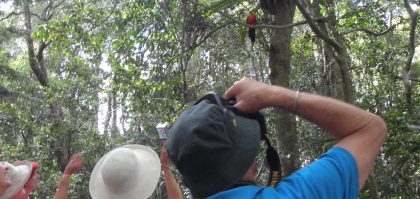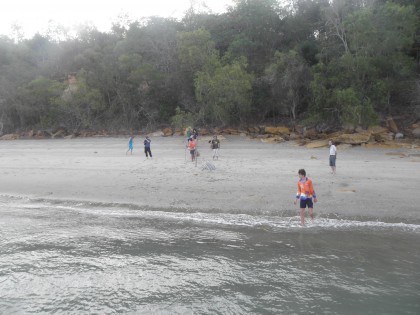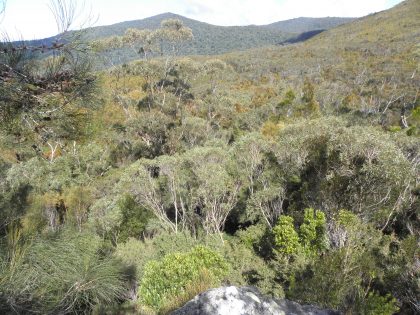Free Webinar: 11.00am (Brisbane time) Wednesday 29 June 2022
KEYNOTE SPEAKER: Dr Hector Ceballos-Lascurain (see below)
Contact chair@wildlifetourismaustralia.org.au for details on how to join.

Background
Wildlife tourism can be conducted wherever there is wildlife, whether captive or in the wild.
Wildlife tourism may be experienced:
- for a couple of hours or more during a day-trip specifically designed as a wildlife or nature-based experience
- for a short period during a more general tour
- as one of the chief components of a multi-day ecotour
- as one of the attractions at an ecolodge or part of a nature walk
Wildlife tourism can occur on:
- Private or leasehold land operated as a tourism venture
- Private or leasehold land held primarily for other purposes but allowing access for frequent or occasional bird-watching or other wildlife-related activities
- National Parks, state forests or council-owned land
- Marine parks, other marine areas
- Public beaches (in Australia, all beaches are owned by the Crown: there are no private beaches)
Matters for discussion at this workshop:

- Private enterprise tourism within national parks and other Protected Areas (including guided tours and establishment of accommodation and other facilities within park boundaries or adjacent to the park): when is it appropriate or not so? Our national parks contain some of our most stunning landscapes and wildlife and offer a great variety of wonderful nature-based experiences. As tourism in our parks grows, how do we ensure that (1) the basic principles of ecotourism are adhered to, (2) biodiversity conservation remains the principal function of Protected Areas, (3) the general public and small tour businesses are not seriously disadvantaged, (4) the feeling of wilderness is not lost and (5) revenue from the enterprises helps to fund the conservation management of the area?
- Alternatives to Protected Areas: Ecolodges, campgrounds and other accommodation near Protected Areas, development of tourism (including guided walks, horseback trails or environmentally-friendly use of 4WD to view wildlife, and camping or other accommodation) on private and leasehold lands, tourism on council or crown property
- Alternatives to Protected Areas (continued): Potential incentives for landholders to retain native habitat on their properties by being paid for visits to private or leasehold land by tour operators for birdwatching or other wildlife-viewing, and the hurdle in Australia of high insurance premiums for the owners, even if visited only occasionally and for short periods.

Program
- 11.00am Welcome and Introduction to the above topics (Ronda Green)
- 11.05am The present and future of Wildlife Tourism and the principles of Ecotourism (Hector Ceballos-Lascurain, Director-General of the Program of International Consultancy on Ecotourism: and see below)
- 11.30am Exclusive tourism in National Parks in the name of conservation? (Sonya Underdahl: researcher of commercial tourism development)
- 11.40am Potential impacts of tourism on fauna and flora under various scenarios (Ronda Green, ecologist and chair Wildlife Tourism Australia)
- 11.45am National Parks for Life: Protecting Queensland (Jon Ferguson, Qld Conservation Council)
- 11.55am Specific questions to speakers.
- 12.15pm Open discussion on all of the above.
- 1.00pm close of webinar.
Contact chair@wildlifetourismaustralia.org.au for details on how to join.
OUR KEYNOTE SPEAKER
Dr Hector Ceballos-Lascurain, is a Mexican environmental architect and sustainable tourism consultant known worldwide as the “father of ecotourism.” He is Special Advisor on Ecotourism to the International Union for Conservation of Nature (IUCN) and to the United Nation’s World Tourism Organization (UNWTO), and is the Director General of the Program of International Consultancy on Ecotourism (PICE). He has carried out consultancy work in 85 countries and territories around the world (including Australia). In 1983, he coined the term “ecotourism” and its preliminary definition. His modified version of this definition was officially adopted by IUCN in 1996 and reads as follows: “Ecotourism is environmentally responsible travel and visitation to relatively undisturbed natural areas, in order to enjoy, study and appreciate nature (and any accompanying cultural features – both past and present), that promotes conservation, has low visitor impact, and provides for beneficially active and sustainable socio-economic involvement of local populations”. In other words, ecotourism denotes nature tourism with a normative component.
Hear part of a presentation by Dr Ceballos-Lascurain here .
and read an interview here:
https://ecoclub.com/news/085.pdf
Contact chair@wildlifetourismaustralia.org.au for details on how to join this webinar.

I would be very interested but unfortunately, I have other commitments. I would also be interested regarding any information given specifically regarding the Australian environment. Will there be a recording of it available to members?
Ecotourism student at VUT
Looks like an excellent topic – I will be tuning in for sure!